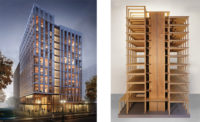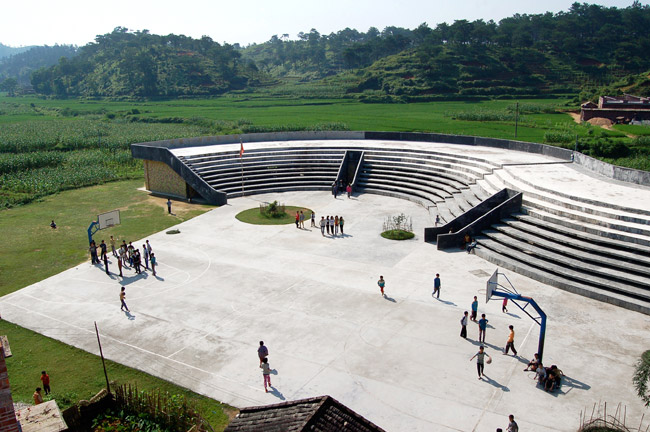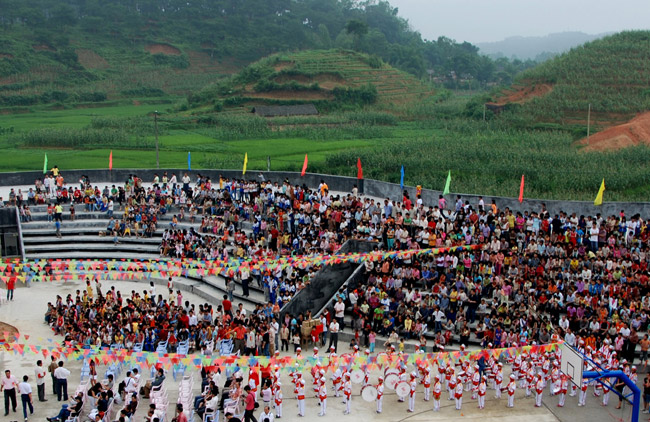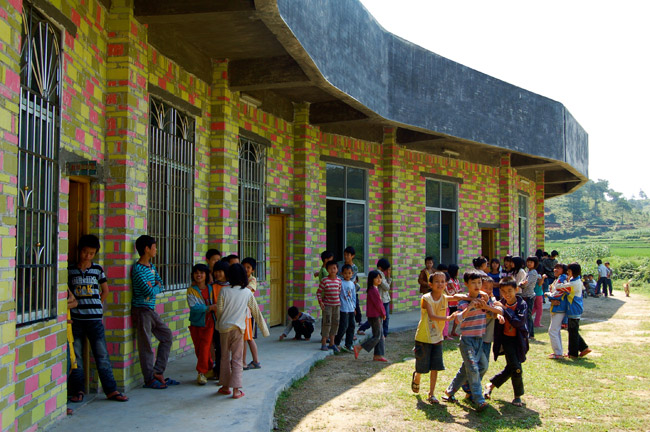Hong Kong
Often lost among the headlines about China's astonishing development—not least those covering its government's latest proposal to urbanize an additional 400 million people over the next decade—has been a growing interest in the corresponding transformation of the Chinese countryside. At the forefront of architectural research and experimentation in this area is Rural Urban Framework (RUF), a studio headed by University of Hong Kong professors Joshua Bolchover and John Lin.
Since 2006, Bolchover and Lin, who originally hail from England and Taiwan, respectively, have been working with nonprofit organizations, private donors, and local governments on projects in villages throughout China. In Qinmo, in southern Guangdong province, they converted a disused school building into a community center, complete with a demonstration farm. In northern Shaanxi province, their Lingzidi bridge spans a small river to better connect local residents with agricultural fields, while accommodating washing, fishing, and small-truck access. “Nowadays, 50 percent of the world lives in cities,” says Lin. “But we're interested in the other 50 percent—especially in China, one of the most intensively urban and intensively rural places in the world.”
Indeed, RUF's work stems not from a desire to preserve or re-create some pastoral idyll but rather a hardnosed pragmatism that addresses the current-day realities on the ground: complex social structures and the legacy of collectivism under Communist rule; shifting government imperatives and the subsumption of villages by ever-expanding cities; migration and capital flows, and a resulting depopulating of the countryside that is paradoxically coinciding with its hyperdevelopment. “There's no comfortable transition between rural and urban in China,” says Lin. “It's a collision between the two.”
RUF, which works pro bono—cobbling together funding from grants and donations—tackles its projects at multiple levels. Building and programming often work hand in hand, as with the demonstration farm for higher-value organic produce and livestock that they brought to Qinmo, or the outdoor, bleacher-style public gathering spaces integrated into their Mulan primary school in Guangdong. The studio makes a point of employing the materials at hand—recycling bricks for a school in Jiangxi province, for example, or using readily available concrete blocks for the renovation of a historic bridge—while also working at a range of scales, from acupuncture-like interventions to the design of entire villages. Proving their dexterity, their Yongxin Secondary School Prototype responded to changes in government policy by combining several existing schools into a mammoth complex of perimeter buildings around a courtyard for over 5,000 students. It was later replicated in a more urban location nearby.
Given China's unprecedented changes, experimentation and testing new models are the rule of the day. But Bolchover and Lin are under no illusions that architecture can (or should try to) offer a definitive panacea. “We're just trying to introduce a challenge [in designs] that can change or be adapted over time,” Lin says. “What we can do is limited,” Bolchover adds. While they can't solve the problems of China's countryside, they can help make some people's lives a little better.
Rural Urban Framework
FOUNDED: 2006
DESIGN STAFF: 4
PRINCIPALS: John Lin, Joshua Bolchover
EDUCATION: Lin: Cooper Union, B.Arch., 2002. Bolchover: Bartlett School of Architecture, UCL, Dip.Arch., 2000; Cambridge University, M.A. (Cantab), 1996.
WORK HISTORY: Lin: Diller + Scofidio, 2000'01. Bolchover: Chora/Raoul Bunschoten, 2003'07; Newbetter (own firm), 2002'07; Diller + Scofidio, 2001'02.
KEY COMPLETED PROJECTS: Mulan Primary School, Guangdong, 2012; Yongxin Secondary School Prototype, Jiangxi, 2012; Lingzidi Bridge, Shaanxi, 2012
KEY CURRENT PROJECTS: Angdong Health Center, Hunan, 2014; Mulan Ecological Landscape, Guangdong, 2014
WEB SITE: www.rufwork.org
People |
Products |

























































